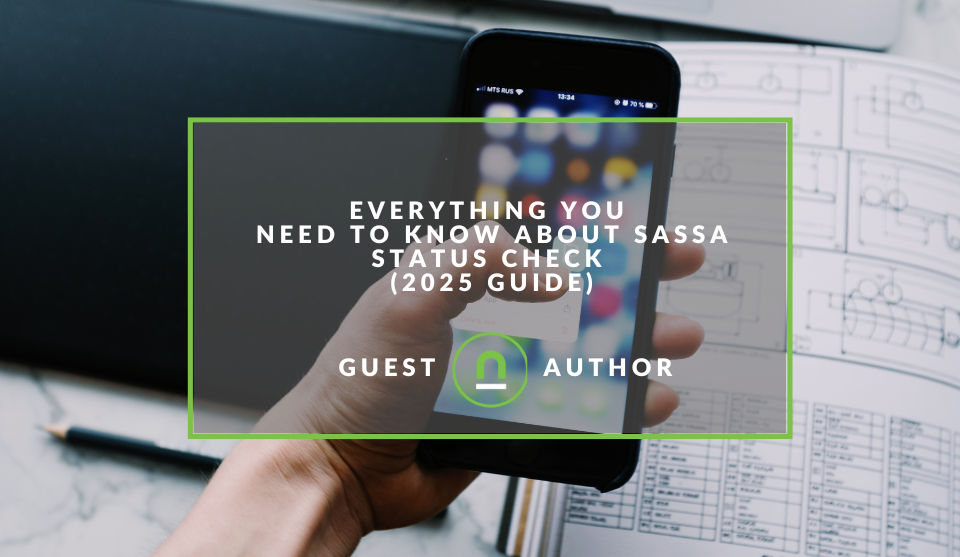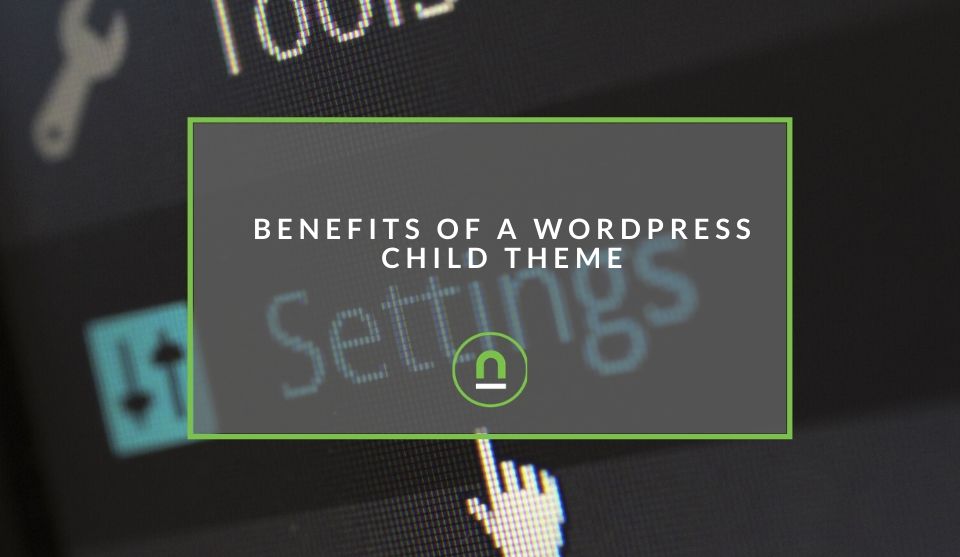Recent posts

Mind, Body & Soul
Do Not Whistle at Night: South Africas Strangest Superstitions
26 April 2025

Geek Chic
How to Replace A Broken Lenovo Laptop Screen
24 April 2025

Money Talks
Everything You Need to Know About SASSA Status Check
13 April 2025

Mind, Body & Soul
The Genetic Diversity of Cannabis Seeds
12 April 2025
Popular posts
Extravaganza
Trending Music Hashtags To Get Your Posts Noticed
24 August 2018
Geek Chic
How To Fix iPhone/iPad Only Charging In Certain Positions
05 July 2020
Extravaganza
Trending Wedding Hashtags To Get Your Posts Noticed
18 September 2018
Money Talks
How To Find Coupons & Vouchers Online In South Africa
28 March 2019
Benefits Of A WordPress Child Theme
16 May 2020 | 0 comments | Posted by Che Kohler in nichemarket Advice
WordPress is the most popular CMS for building a website, and the reason is due to its massive range of customisation. WordPress allows the average person to create a stunning website with reduced costs with the help of themes. Themes will enable you to install 3rd party code and designs created by developers from all over the world and use them as a template for your website which you can then use to add your customisation to afterwards. Themes are what give WordPress its incredible utility, but it is often incorrectly used, which can result in costly mistakes or changes that can break your website.
Remember that the WordPress CMS and the theme you run are two different codebases, and when you upgrade one, it can affect the other in ways you may not know. Add to that 3rd party codes from plugins, and you add new conflicts and vulnerabilities to your website.
To get around theme customisation issues and base code updates, WordPress offers users the option of the main theme and a child theme. So what exactly is a child theme, and why would you use one?
What is a WordPress child theme
To kick-off, we first need to understand what a child theme is and the role it plays in the WordPress ecosystem. A WordPress child theme, when installed, inherits all the functionality of the parent theme or primary theme.
A WordPress child theme is a WordPress theme that inherits its functionality from another WordPress theme, the parent theme. Child themes are often used when you want to customise or tweak an existing WordPress theme without losing the ability to upgrade that theme. It then allows you to safety update, tweak and edit your theme with custom styling changes without ever affecting the parent theme.
The use of a child theme
Themes and WordPress often push out regular updates to improve security, performance and add new features; these updates often create chaos and even emove all custom styling once updated. This left website owners with a tough decision, update and lose all your changes or continue without the latest updates and risk having old bugs or vulnerabilities in their website code.
The reason behind the child theme
To solve this issue, the WordPress community decided it would be best to introduce the concept of the parent theme and a child theme. A child theme in WordPress would inherit all the functionality, features, and the code of the parent theme without making any changes to the parent theme itself.
In theory, all WordPress themes can be duplicated into a parent and child theme but remember that not all WordPress themes are created equal. A Parent theme with limited functionality is not ideal as you may find your customisation requires far more work than if the theme came with all the bells and whistles.
This is why it's crucial to select a comprehensive theme from the beginning and reduce your need for custom code and 3rd party software like plugins that can also bring along its baggage and considerations.
Advantages of Using a WordPress child theme
Child themes have been pitched as a solution to the code update problem, but it is by no means a widespread practice there are many websites run on WordPress that still only installing a parent theme, and some can get away with it, so why the need for a child theme then? The short answer would be for good housekeeping, and if you plan on building on the site regularly, it helps provide a stable and yet forgiving foundation.
1. Safe updates
The child theme automatically inherits the parent theme’s features, styles, and templates. It provides an additional layer that allows you to make changes to your site using child themes without ever touching the parent theme. When a new version of the parent theme arrives, you can safely update it as all your modifications are saved in the child theme.
2. Easy to extend
A child theme built on a robust theme framework allows a great deal of flexibility without writing a lot of code. Instead of having to add too much additional code to your PHP files or adding 3rd party plugins you can select from the parent theme and pulling features you like, remove ones you don't like and continue building a site to your specific needs.
3. Fallback safe
When working on a child theme, and you forget to code for something or break something, then there is always the parent theme’s functionality available as the fallback option.
4. Changes in direction
The original theme developers don't answer to you, and in some cases, they may add or remove feature sets that contain certain features or, then you can add it in your child theme since you have the code for it. Lastly, if they make a drastic change that you don’t like, then you can always avoid updating.
Disadvantages of using a child theme
No solution is perfect for every situation, and the child theme is by no means perfect, it has its limitations, but these limits are far more manageable than living without it. To give you the full idea of what a child theme offers, we need to look at where it comes up short.
1. The leaning curve
Using child themes requires you to invest the time to learn about the parent theme. There is a learning curve that can be offputting because many themes come with improper documentation and may have its quirks; no theme is perfect. You will need to review where your parent theme falls short and what you need to improve it to get the best out of it. This can mean having lots of additional code added to your child theme because your parent theme isn't up to the task.
2. Abandoning the project
When purchasing a theme, you tie yourself to the company and developers who support it, with thousands of themes out there many themes lose support as developers abandon the project. Sometimes other developers may take over the project and offer updates but do not bank on this happening every time.
Having no support for your theme means you will have to add custom code for all bugs and security features that come along as you continue in your build of the site.
What happens if I modify a child theme directly?
When you update your WordPress theme, the CMS update overwrites all the files on your server with the default versions included in the ZIP file. So if your changes don’t live somewhere safe, they will be wiped out. Modifying a child theme means you're free to do as you please. You can even work on multiple child themes incase you want to roll out changes temporarily or test changes.
Child themes are the ideal sandbox solution for anyone with an established site that does not want to take risks in losing what they have built but also want the freedom to explore new possibilities for their website.
Raising your child
The reason many site builders skip the child theme process is because of its a massive investment in time. Many agencies building sites for clients are only there to slap it up as quick as possible and do not consider future iterations or perhaps that someone else will take over in the future.
If you've spent a lot of money on a broad theme that you feel will carry you for many years, it pays to set up a child theme and create a foundation that allows your o built towards your end goal without sacrificing performance or security.
Contact us
If you would like us to help set up your sites or want to know more about digital marketing for your business, then don’t be shy we’ re happy to assist. Simply contact us
Are you looking to promote your business?
South African Business owners can create your free business listing on nichemarket. The more information you provide about your business, the easier it will be for your customers to find you online. Registering with nichemarket is easy; all you will need to do is head over to our sign up form and follow the instructions.
If you require a more detailed guide on how to create your profile or your listing, then we highly recommend you check out the following articles.
Recommended reading
If you enjoyed this post and have a little extra time to dive deeper down the rabbit hole, why not check out the following posts about content management systems.
- How To Pick The Correct CMS For Your Business
- 8 Open Source CMS Options
- 11 WordPress Plugins to help you Integrate with Google Products
- How To Set Up AMP Serving On Your WordPress Site
- How To Use The Classic Editor After Upgrading To WordPress 5
Tags: WordPress, CMS
You might also like
Do Not Whistle at Night: South Africas Strangest Superstitions
26 April 2025
Posted by Julian Parker in Mind, Body & Soul
Discover South Africas most enduring superstitions, from midnight whistling to mirror placement and why these beliefs still shape everyday life for s...
Read moreThe Genetic Diversity of Cannabis Seeds
12 April 2025
Posted by Alina Jones in Mind, Body & Soul
A look into the South African heritage of cannabis growing and how the country has taken the plant in terms of growing it into a viable industry & th...
Read more{{comment.sUserName}}
{{comment.iDayLastEdit}} day ago
{{comment.iDayLastEdit}} days ago
 {{blogcategory.sCategoryName}}
{{blogcategory.sCategoryName}}
